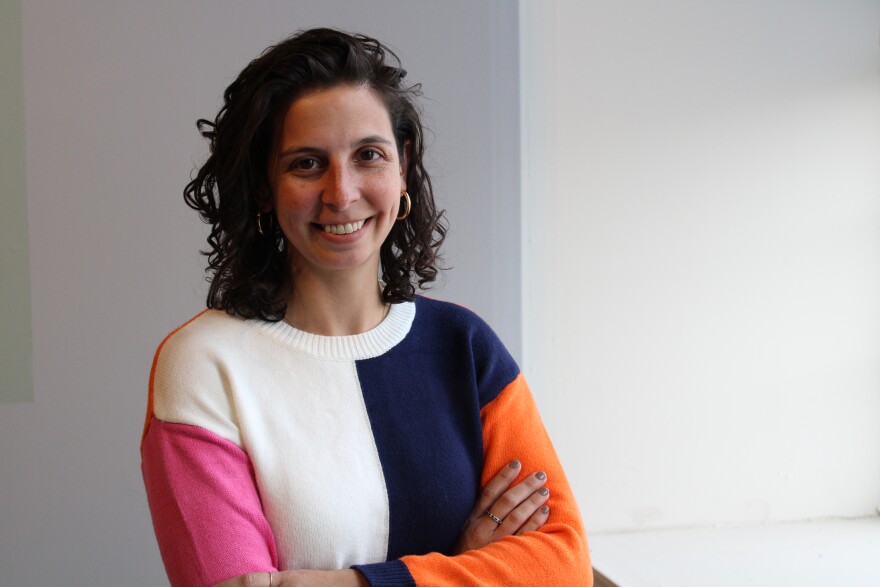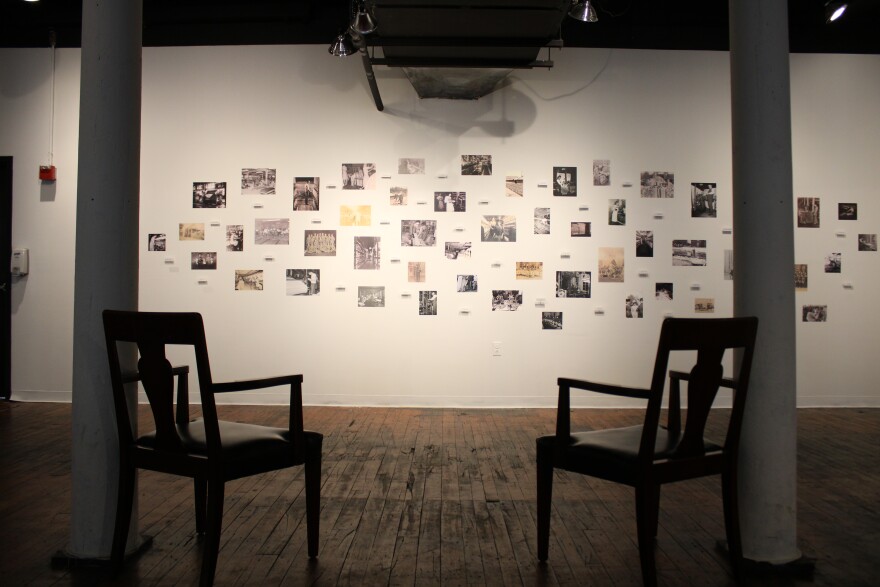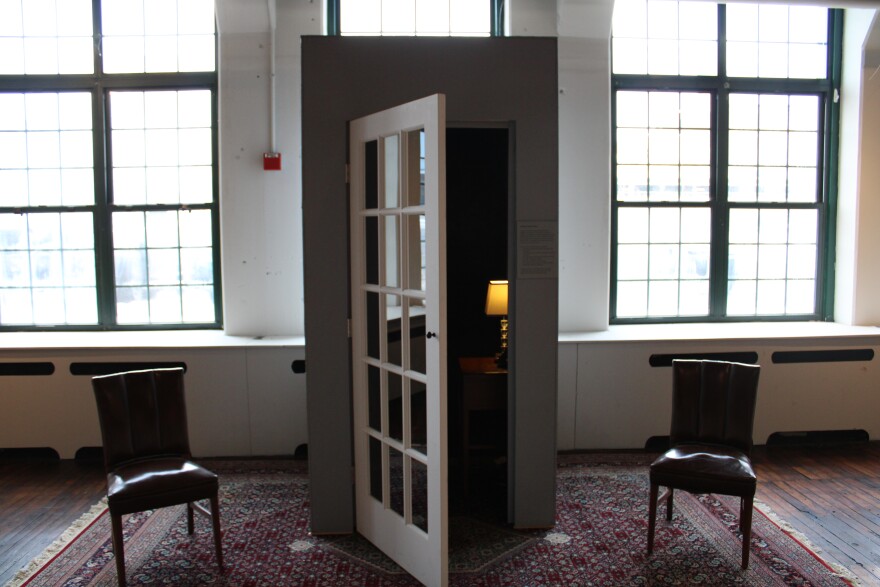On a recent afternoon at the Maine Museum of Innovation, Learning and Labor — formerly Museum L-A — executive director Rachel Ferrante opened the door to a small booth set up in the main exhibit room.
"So you come in, there’s a little desk with a lamp, and a chair. It’s cozy," she said.
On the desk was an iPad set up to record audio. And on the wall was a sign with prompts for an interview, including: How did you come to Lewiston? How do you define your community? What’s your vision for Lewiston?
Ferrante said visitors are encouraged to share their own stories, or squeeze in a second chair and ask the questions to someone else.
"Maybe somebody could interview a grandparent or a sister or a brother or an uncle," she said.
It's one interactive piece of Who We Are/Who Are We?, a new exhibit at the Maine MILL that opened to the public this week and will be on display for the rest of the year.
"At its core," Ferrante said, "It is about immigration and identity."

On one wall of the exhibition room — located in a former mill building — are plaques discussing the history of various immigrant communities from over the decades, from Eastern European Jews and Somalis to more recent arrivals from the Congo, Afghanistan, Ethiopia, and elsewhere.
On the opposite wall are photographs of ten Black current and former residents of Lewiston-Auburn, with QR codes that let visitors access oral history interviews with each person.
The interviews were conducted by Marcelle Medford, a Sociology and Africana professor at Bates College.
"I think it's always important to start with the fact that, right, Black identities are diverse and multiplicitous," Medford said.
But in Lewiston, Medford said that diversity is often condensed into one story of Somali refugees arriving in the 1990s. And even that story, she said, is due for an update.
"You can't be new if you've been here for a quarter of a century, right?" she said. "So really kind of digging into those narratives, and letting people sort of define their own sense of belonging, I think is really crucial here."

Medford recorded interviews with people like Fuad Abdi, a 24-year-old who grew up in Lewiston’s Somali community.
As he and Medford spoke in a Somali restaurant downtown, Abdi said one of the biggest changes he'd seen over the years is the Somali community taking a stronger role in advocating for its needs.
"I don't think like they're, like, need to be quiet, if that makes sense, anymore. Like, we can speak about our problems or what we need from the community. Like, we're not like outsiders," Abdi told Medford.
Abdi also told Medford that he sees a generational shift underway, as young people like himself who grew up in Maine build on the work of older generations who've started businesses and established a foundation for the community.
"I'm proud of them," he said, referring to the older generation in the Somali community. "Because, they're like paving the way for us who grew up here, who aren't like new to all this."

Tonya Bailey-Curry, a lifelong resident whose story is also featured in the exhibit, told Medford that defining her own sense of identity as the child of a white mother and Black father has been complicated.
"We were brown enough to not be white, but not brown enough to be Black. So we found ourselves in this really weird space of, 'Who are we? Why do we look different? Why do we feel different?'" she said in her oral history interview.
Bailey-Curry is a therapist who was born and raised in Lewiston, but told Medford that she and her family frequently confront the assumption that they’re from somewhere else.
"'Oh, where are you from?' It's like, I've been here my whole life. I've gone through all of these schools, I've, you know, my kids are in the schools, and they still, still get that same question, because of that assumption that we're not from here," Bailey-Curry said.
Bailey-Curry's interview, and the others included in this exhibition, are now part of the museum’s archive of nearly 300 oral histories, with transcripts and audio files posted on the website.

Medford said part of her intention with this project was to challenge the idea of who gets viewed as a “new" Mainer, and to start a broader conversation about race.
"I hope that this is the beginning of folks really kind of leaning in to addressing the multiplicities of Blackness that exist in Lewiston, and across the state of Maine," she said.
And museum director Rachel Ferrante said that visitors who share their own stories in the makeshift recording booth could help provide a roadmap for which histories the museum should explore next.



